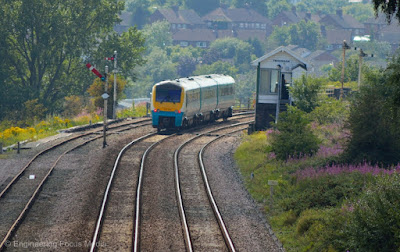In my last blog regarding the subject of Crossrail North I identified potential difficulties in funding and building a new east-west railway and explained how it is very different from Crossrail 2. Another issue which I did not mention however is that London has one combined transport authority known as TfL (Transport for London).
The size of TfL and nature of its centralised organisation means that it has the resources available to develop detailed proposals which it is then able to put forward to the government. The initial route for Crossrail 2 (CR2) was safeguarded in 2008, proposals have since been refined and improved. Whilst here in the North we are still waiting for Transport for the North (which has yet to receive statutory status) to publish its "Strategic transport plan".
TfN states "Transport for the North is developing an integrated, multi-modal Strategic Transport Plan to make it easier for passengers and freight to move throughout the region across all transport modes. This plan will build on the March 2015 Northern Transport Strategy to make a prioritised case for investment in the North of England to 2050." [1]
As far as I can tell the DfT will retain full control over funding for northern transport projects, but TfN will have ultimate responsibility for setting out the future strategy in the North. So that means even if TfN decides a new rail link is needed, it will not have direct access to funding via passenger revenues and taxes, or the recourses available to TfL.
As it stands Crossrail North (CRN) would require the full backing of the DfT and would be entirely funded by central government, unlike CR2 which would still require the backing of the DfT but will be 50% funded by London though fares, taxes and other means.
In terms of planning CR2 is almost 10 years ahead of CRN, TfL has already prepared a funding and financing study for the line and the route is in the refinement stage. CRN meanwhile isn't even a line on a map, so while CRN should happen we shouldn't fool ourselves into thinking that if CR2 funding were pulled, then CRN would happen tomorrow or anytime soon.
Despite the difficulties and the fact that it does not compare to Crossrail 2 I still feel the North requires and deserves improved rail links. I don't want to sound like a DfT PR man and I wouldn't say that I am a particular fan of Grayling, but I do not think the current rhetoric coming from some northern quarters is particularly helpful.
Two announcements which should provide some answers are the release of TfN's strategy which will not be published until 2018 and the list of schemes (if any beyond renewals) which the government is willing to commit to during control period 6 covering the period 2019 to 2024.
The CP6 HLOS (high-level output specification) which was published on the 20th of July this year (2017) did not set out any priorities for investment other than renewals and maintenance and no formal funding package was agreed. The government is expected to announce the funding available in October, however it is not certain if the DfT will be committing to any rail infrastructure investment during CP6.
All I can say for now is watch this space.....
Written by Chris Howe
In terms of planning CR2 is almost 10 years ahead of CRN, TfL has already prepared a funding and financing study for the line and the route is in the refinement stage. CRN meanwhile isn't even a line on a map, so while CRN should happen we shouldn't fool ourselves into thinking that if CR2 funding were pulled, then CRN would happen tomorrow or anytime soon.
It feels like we in the North are being left in the dark and the lack of information has provided a vacuum which is being filled by speculation by the press and local officials. I believe TfN should be more visible in the North and should be more active in keeping the public apprised of progress it is making in formulating a strategy.
What is unclear is if TfN will have (or has had) any input regarding electrification of the Trans-Pennine route, is the uncertainty being driven solely by the DfT and the overspend on GWML electrification or did the TfN study have any bearing comments made by Chris Grayling regarding electrification?
Despite the difficulties and the fact that it does not compare to Crossrail 2 I still feel the North requires and deserves improved rail links. I don't want to sound like a DfT PR man and I wouldn't say that I am a particular fan of Grayling, but I do not think the current rhetoric coming from some northern quarters is particularly helpful.
Two announcements which should provide some answers are the release of TfN's strategy which will not be published until 2018 and the list of schemes (if any beyond renewals) which the government is willing to commit to during control period 6 covering the period 2019 to 2024.
The CP6 HLOS (high-level output specification) which was published on the 20th of July this year (2017) did not set out any priorities for investment other than renewals and maintenance and no formal funding package was agreed. The government is expected to announce the funding available in October, however it is not certain if the DfT will be committing to any rail infrastructure investment during CP6.
All I can say for now is watch this space.....
Written by Chris Howe
For more information
e-mail Blog@EngineeringFocus.co.uk
Call: 07393 565 863











































